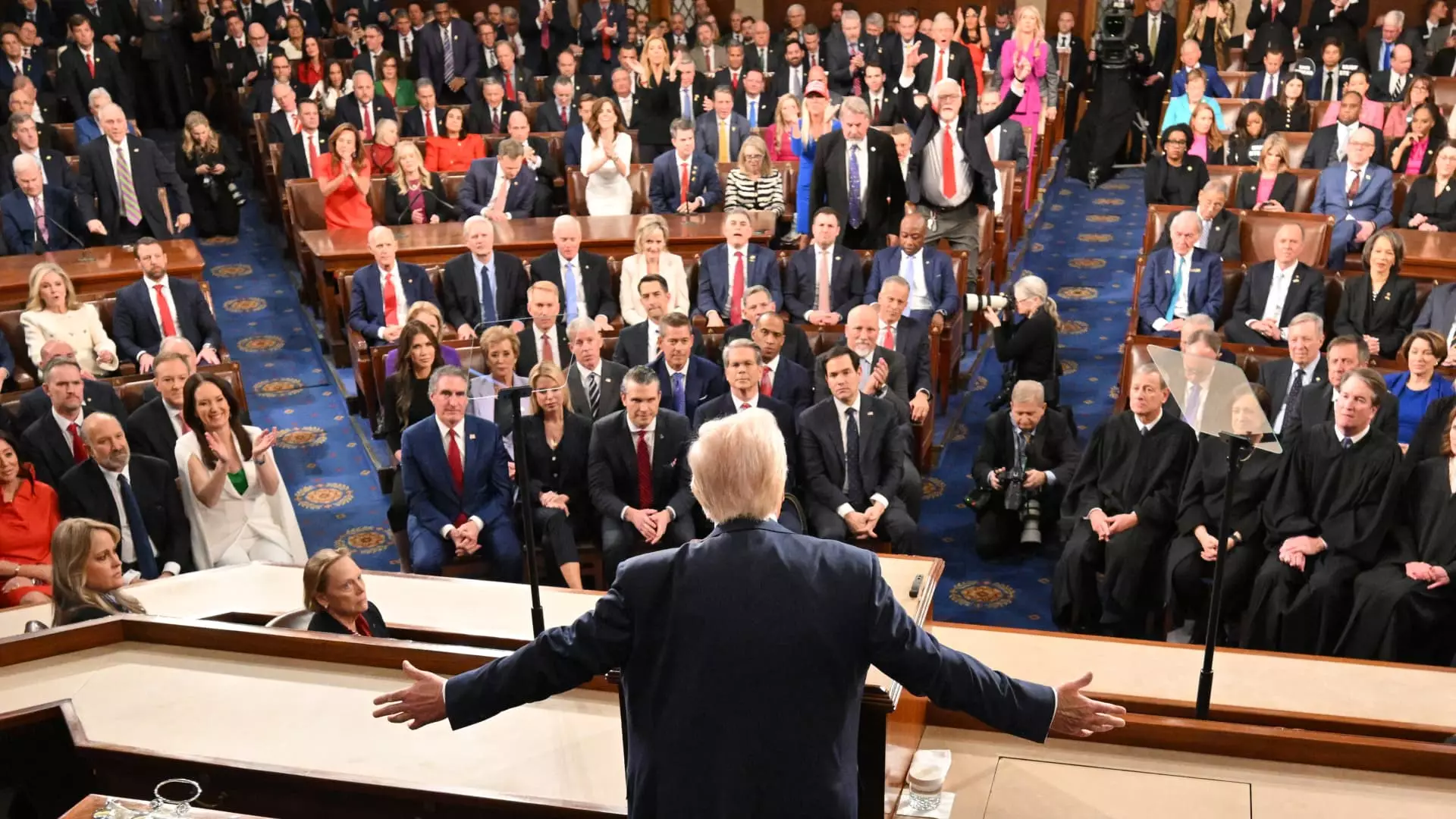The notion that imposing tariffs can create a significant number of jobs is a beguiling one, especially when espoused by individuals in high office. President Donald Trump heralded tariffs as a job-generating machine, claiming, “We will create jobs like we have never seen before.” However, the stark reality is that tariffs often do the opposite, resulting in economic contraction and job losses across a wide array of industries. While the rhetoric encourages a sense of nationalism and pride in domestic production, it ultimately harbors a fundamental fallacy that puts whole sectors at risk.
Economists like Mark Zandi, chief economist at Moody’s, assert that tariffs broadly categorized are a “lose-lose” proposition. This sentiment encapsulates the crux of the issue: protective measures aimed at bolstering American jobs could instead lead to a substantial decline in employment. The analysis sheds light on a catastrophic irony: the roaring promises of job creation mask an insidious threat to the fabric of the economy.
A Restrictive Measure with Far-Reaching Consequences
When the Trump administration introduced a flurry of tariffs, they were not just instruments of economic strategy but weapons of trade war. With a 25% levy on steel and a 20% duty on Chinese imports, the intention was clear: shield American industry from foreign competition. However, a deeper dive into the repercussions reveals a troubling picture. While some sectors may initially benefit from protection, such as steel producers, the elevated costs ripple through the economy, hitting manufacturers and consumers alike.
For example, a 2023 report highlighted that, while steel tariffs elevated domestic steel prices and production, they simultaneously inflated costs across steel-dependent sectors: automotive, construction, and agricultural machinery, to name a few. The paradox is unsettling; protecting one sector can lead to the dismemberment of others, as increased production costs translate into layoffs or closures in industries that can’t absorb the shock.
Historical Parallels: Learning from the Past
To grasp the destructive potential of modern tariff policies, one must reflect on historical precedents. The Smoot-Hawley Tariff of 1930 serves as a cautionary tale for any policymakers advocating for similar protective measures. This ill-fated piece of legislation didn’t just fail to achieve its goals but is also widely credited with exacerbating the Great Depression by stifling international trade and leading to retaliatory measures from other nations.
Experts like Michael Strain have pointed out that recent tariffs bear a striking resemblance to those failed policies. They’ve demonstrated little success in reviving manufacturing, with evidence suggesting a 2.7% net reduction in manufacturing employment during Trump’s first term. Such findings highlight a troubling trend: the past mistakes of economic isolationism can echo through generations, leaving working Americans to bear the burden.
Collateral Damage: The Hidden Costs of Tariffs
The pervasive effects of tariffs are not confined to job losses within protected industries; they extend into the very lifeblood of the economy. As Lydia Cox from the University of Wisconsin-Madison emphasizes, tariffs are a “blunt instrument” that inflict collateral damage on other sectors. The higher costs associated with tariffs do not simply vanish; they are passed on to consumers in the form of increased prices.
When consumers find themselves paying more for essential products—ranging from automobiles to everyday appliances—they are inevitably left with less disposable income. This is particularly worrying for lower and middle-income families, for whom even small price increases can mean significant financial strain. Economists also warn of retaliatory measures from trading partners, underlining the interconnectedness of today’s global economy, which can lead to harm not just domestically but abroad.
Connecting the Dots: Toward a Sustainable Economic Policy
The real question to ponder is not how tariffs might provide a temporary shield but how they distract from the fundamental issue of modern economic evolution. As technological advancements and globalization reshape the landscape, the focus should shift from protectionism to adaptability. Rather than seeking to entrench American industry behind artificial barriers, innovative policies are needed that prepare the workforce for future demands.
Connecting workers with emerging opportunities—not artificially inflating protections—is essential for a sustainable economic path forward. It’s imperative for policymakers to understand that trade and technology often create discomfort but can also pave the way for a more robust economy overall.
In a world where economic dynamics are ceaselessly changing, the mindset should evolve alongside these shifts, fostering resilience rather than retreating to outdated models of protectionism. This is where the real opportunity lies—not in doubling down on tariffs but in embracing a future that welcomes both domestic growth and international collaboration.

